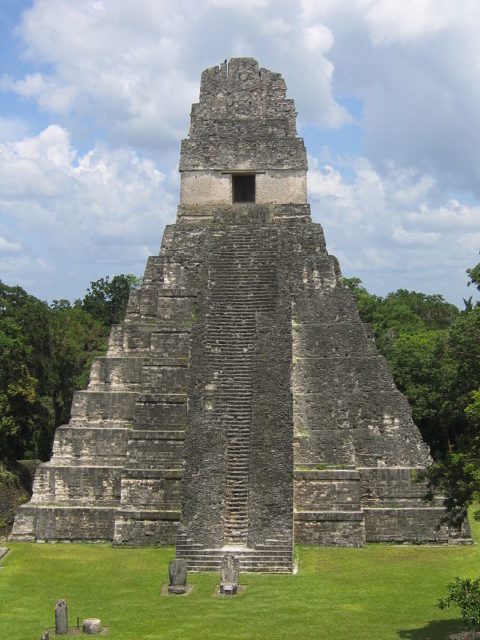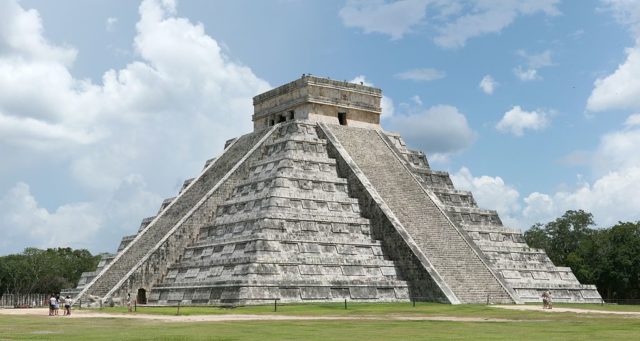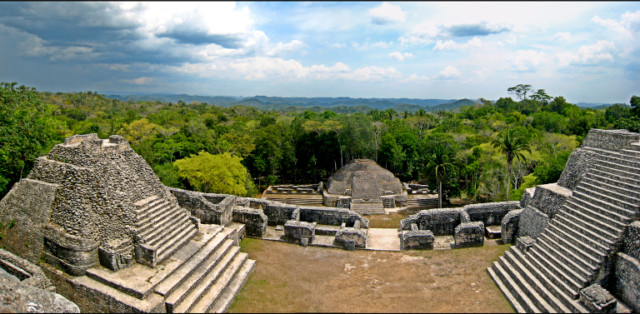An excavation, led by Jaime Awe, made an incredible find in Belize. The team was working at Xunantunich, a Maya archeological site located on the Mopan River. Awe, director of the Belize Valley Archeological Renaissance Project, and other researchers discovered a tomb while they excavated the stairway of a structure on the site.
The Mayan civilization was widespread in ancient Mesoamerica. Like the Egyptians, the Maya people produced impressive pyramids, such as the Castillo at Chichen Itza and the pyramid-temple at Tikal. These pyramids were not built for royal tombs. Instead, they were designed and built to serve for religious reasons. This is what makes this discovery — a elaborate temple-grave in western Belize — such a remarkable find.

Inside the tomb, the team found human remains and two hieroglyphic slabs that researchers say are the key to a decades-old mystery. According to Alan Yahus, a reporter from The Guardian, jade beads, animal bones from jaguars and deer, ceramic pots, obsidian blades, and other, smaller, objects were found resting near the body. The human remains discovered are likely to have belonged to a well-muscled man, who was aged in his 20s at the time of his death.

The chamber itself is the largest to be discovered in Belize. It measures roughly fifteen feet by eight feet. It is also very different from other Mayan tombs that Awe has encountered. This, naturally, has caused some excitement, but the most important part of this find is the two hieroglyphic slabs, reports Jamie Seidel from news.au.com.
The two hieroglyphic slabs are believed to tell the story of the snake-head dynasty. More specifically, it depicts the struggle between the Snake-Head dynasty and the Lords of Naranjo. Both were competing Maya dynasties in the area.
What researchers know is that Lord Kan II of the snake-head dynasty, which was based in the city of Caracol, defeated the Lord of Naranjo before 642 AD— a more precise date has so far eluded experts. To mark the defeat, the Snake-Head dynasty had the history of their clan and their struggle — and subsequent victory — with the Naranjo inscribed onto a series of stone slabs. The slabs were then placed on a ceremonial staircase at Caracol.

Their victory wasn’t meant to last, however. In 680 AD, Naranjo fought and defeated the Snake-Heads, capturing the city of Caracol. They took the ceremonial staircase and reassembled it in their own capital city — likely serving as a type of trophy. They left out four of the hieroglyphic panels, possibly so the story of the Naranjo’s defeat and parts of the Snake-Head dynasty was obscured.
Two of the four missing panels have already been recovered, and now with the two found in Belize, the story can be reconstructed by researchers. Christophe Helmke, an epigrapher working on the project, states that the two most-recently discovered panels are particularly important because they are the first and last slabs in the story sequence. In the first, the beginning of the Snake-Head dynasty is shown; it began with a marriage between Caracol and Yaxca, a Mayan city in Guatemala. The internal struggles of the dynasty are also depicted in the hieroglyphic slabs — Helmke points out the section that shows one of Kan II’s half-brothers attempting to take the crown.
With so little evidence, researchers are hesitant to draw conclusions. They cannot ignore the fact that the hieroglyphic slabs were buried with a person. This means that there is a possibility that the man they discovered might have been associated with the saga of the Snake-Head dynasty. He could have been a relative of the ruling family or even aided in their demise. Until more evidence is found, however, researchers cannot do much more than speculate.
